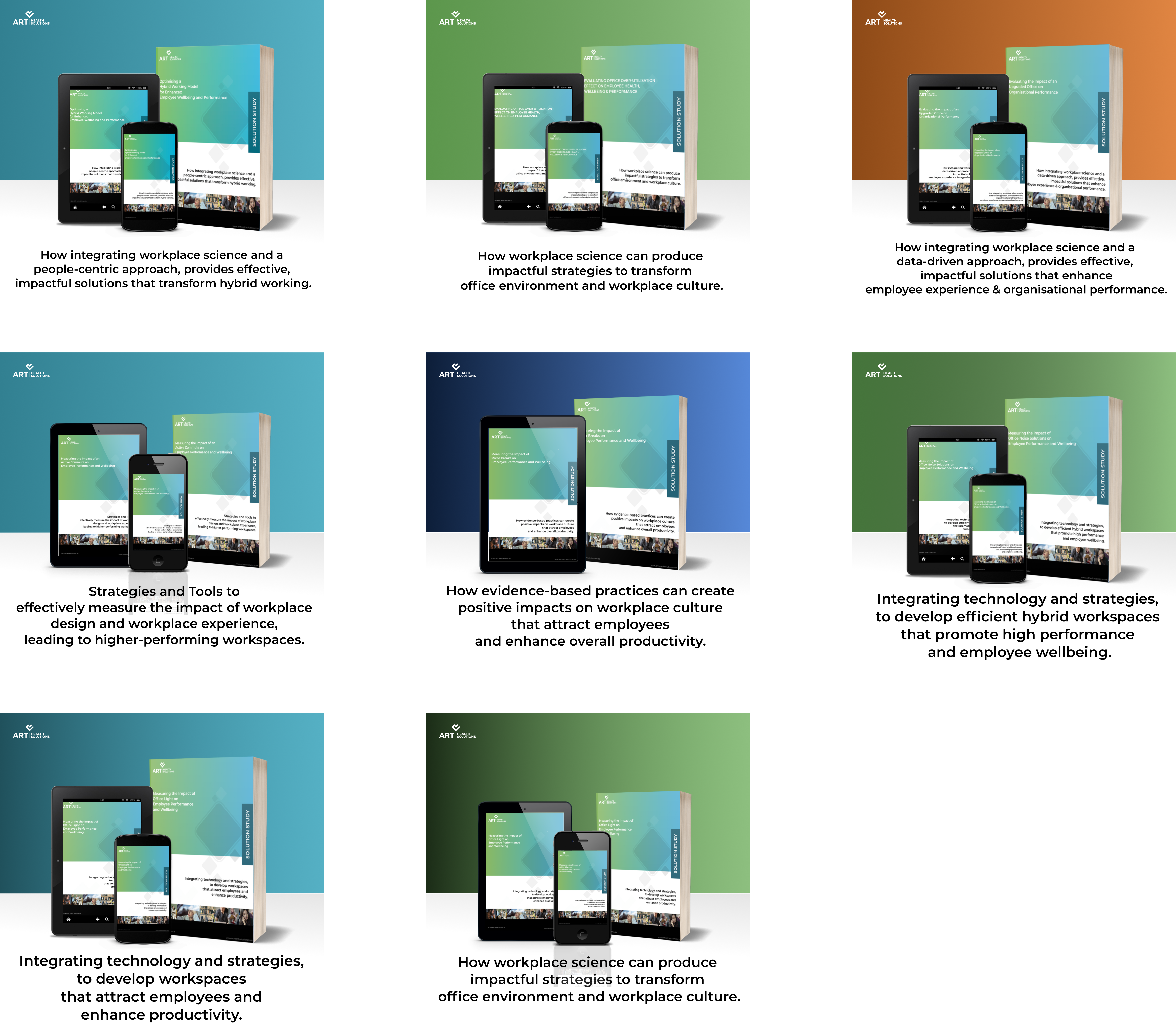
X
Get A Call Back

Evaluating Office Over-Utilisation Effect on Employee Health, Wellbeing & Performance
Problem
Our client sought to downsize their offce headquarters due to the economic climate and the need to save on corporate real estate outputs. However, they had concerns about the potential implications
on employee experience and wellbeing. They sought evidence-based insights to understand the effects of offce space reduction, ensuring informed decision-making and a successful transformation.

A reduction of offce space had several implications putting the client at risk of:
- Potential overcrowding and insuffcient availability of suitable workspaces for employees, leading to decreased productivity and employee dissatisfaction.
- Noisy and uncomfortable environment resulting from overcrowding and poor workplace design.
Method
To address this problem, we gathered data on employee experience, wellbeing, and performance from over 80 employees based at their target site. We collected a variety of
data sources over a 10-week period before downsizing the space to observe employees’ baseline work patterns both in the offce and remotely.

Findings
Collectively, the fndings below supported the real estate decision to reduce the footprint by 20%, resulting in signifcant cost savings and improved fnancial effciency.
- Current office utilisation data indicated a significant portion of underutilised areas as well as a lack of quiet zones and collaborative working spaces.
- While the current policy required employees to work from the office 3-4 days per week, employee preferences leaned toward 2 days per week.
- Noise levels were reported as a limiter of productivity and were higher in the office compared to home. A loud environment highlighted an 8% impairment in cognitive performance.
- Cognitive performance tests, focused on working memory, were maintained while working from home.
Actions
⭕ Work with the real estate team to introduce a variety of work areas tailored to different tasks, including quiet zones, collaboration spaces, and designated areas for focused work to drive a greater balance of utilisation across the full office footprint.
⭕ Collaborate with the HR team to adjust the office policy to a minimum office attendance of two days per week, aligning with employee preferences and enhancing workplace experience.
⭕ Support the real estate team to implement acoustic solutions to mitigate noise levels, including soundproofing materials and soundscaping, to reduce noise-related impairments to productivity and cognitive performance.
⭕ Support the real estate team to implement acoustic solutions to mitigate noise levels, including soundproofing materials and soundscaping, to reduce noise-related impairments to productivity and cognitive performance.

Value
The project revealed a number of significant actionable insights:
- Introducing a variety of work areas creates a better employee experience as well as improving space utilisation. According to research, 83% of office buildings are too static in their set-up to deal with the diverse needs of the workforce (CoreNet Global). Involving employees in the decision-making process by soliciting feedback and incorporating their preferences into the redesign ensures a sense of ownership and alignment with the needs of the workforce.
- Reducing days in the office not only supports employee preference but also reduces the office footprint. Studies show that companies can save up to $11,000 for every employee working 2-3 days remotely per week (Global Workplace Analytics).
- By running this project, the client was armed with the correct data-driven insights to make conscious decisions regarding the organisation’s future office footprint and utilisation. While 69% of corporate real estate leaders plan to reduce office footprint (CoreNet Global), many do not have the correct objective data to support their employees’ wellbeing and performance.
Key Takeaways
The findings and actions delivered through this project allowed the client to reduce their real estate
footprint using our data-driven insights to support the preferences of their workforce, driving:
- More efficient space utilisation through innovative workplace design.
- Significant cost savings.
- All while maintaining employee wellbeing and performance through a people-centric, evidence-based approach.

Explore more real life examples in our solutions series and discover how our unique experience across elite sport, academic research and the corporate landscape, combined with our scientific and data-driven approach, puts us in a unique position to identify opportunities that can drive increased productivity, performance and positively impact workplace wellbeing.

www.arthealthsolutions.com/solutions
